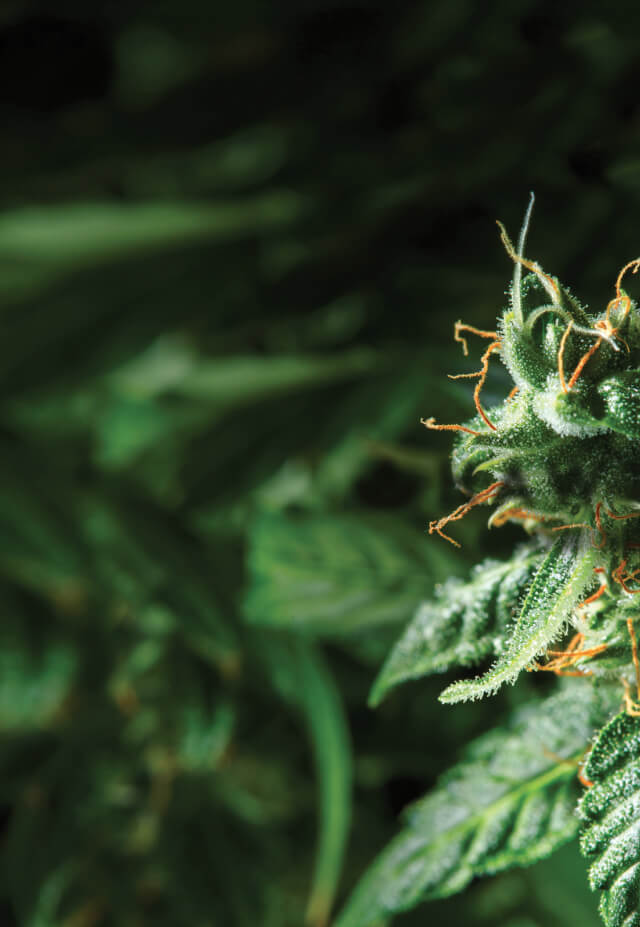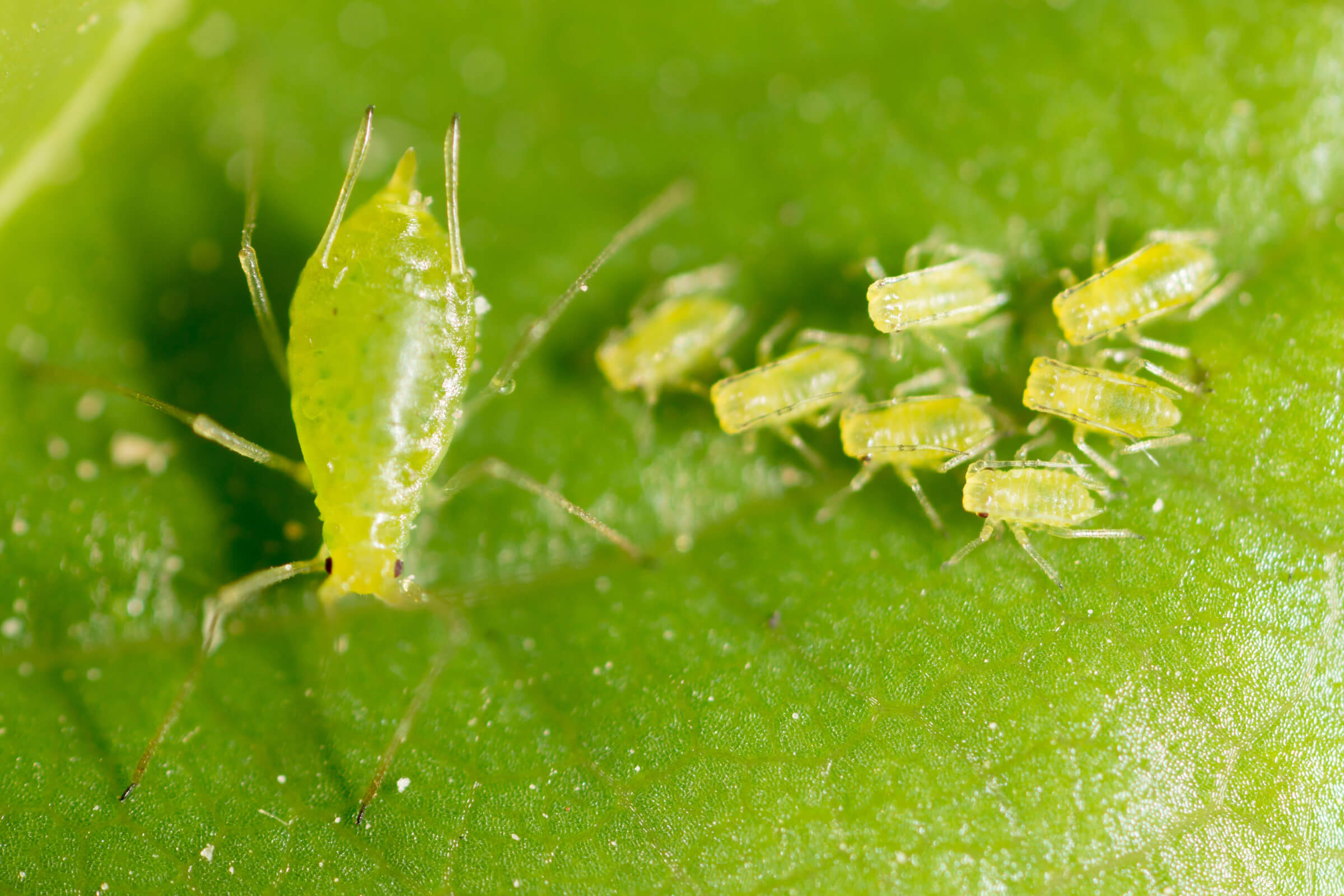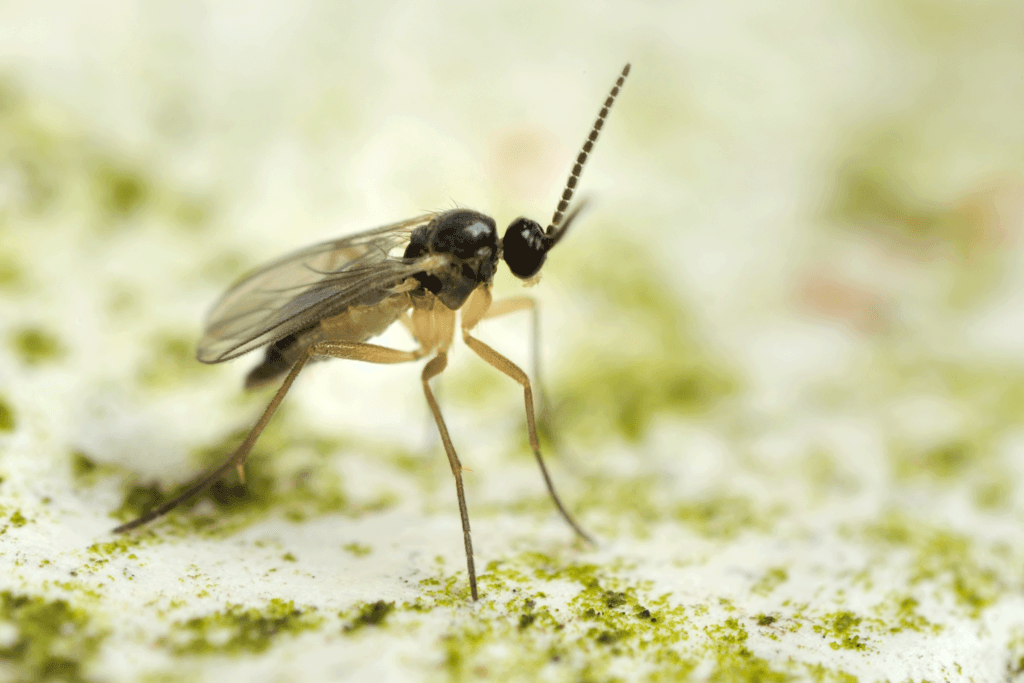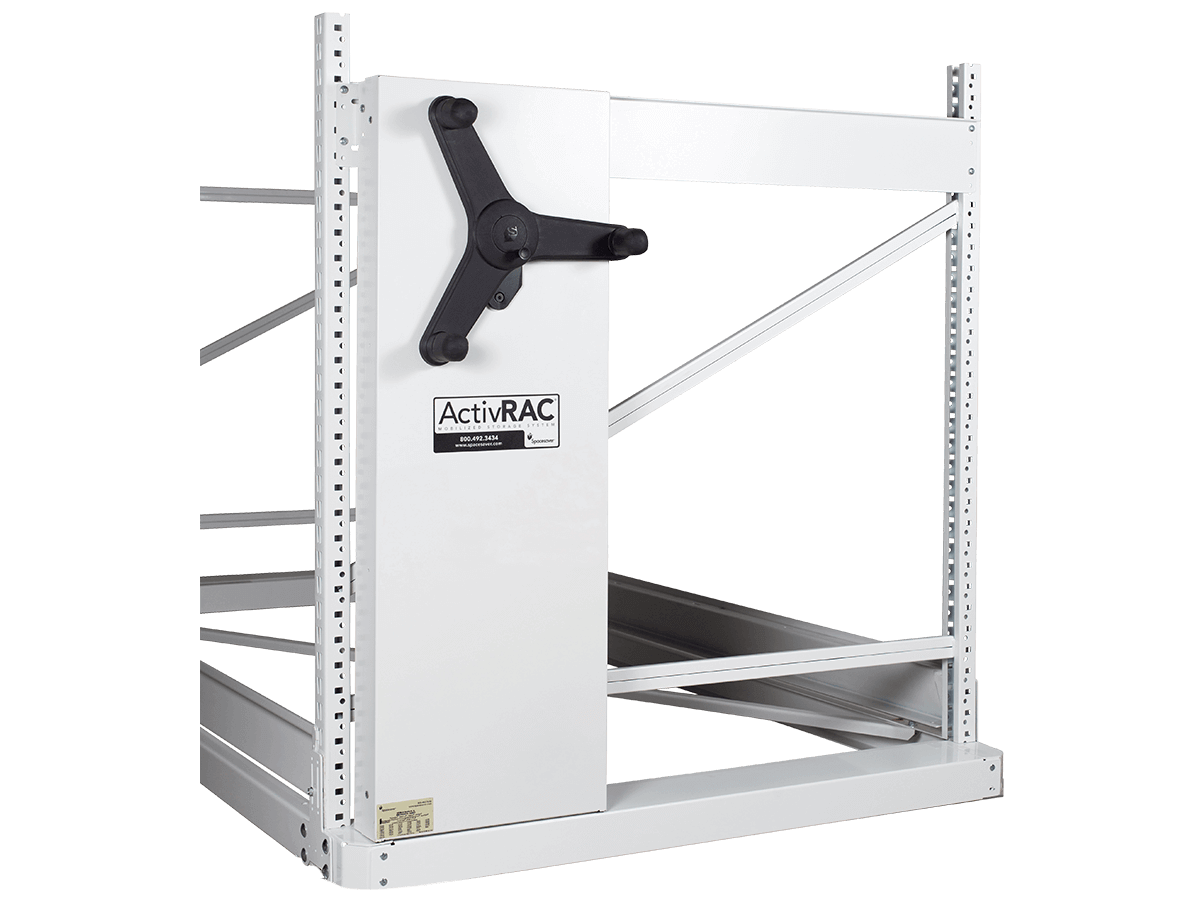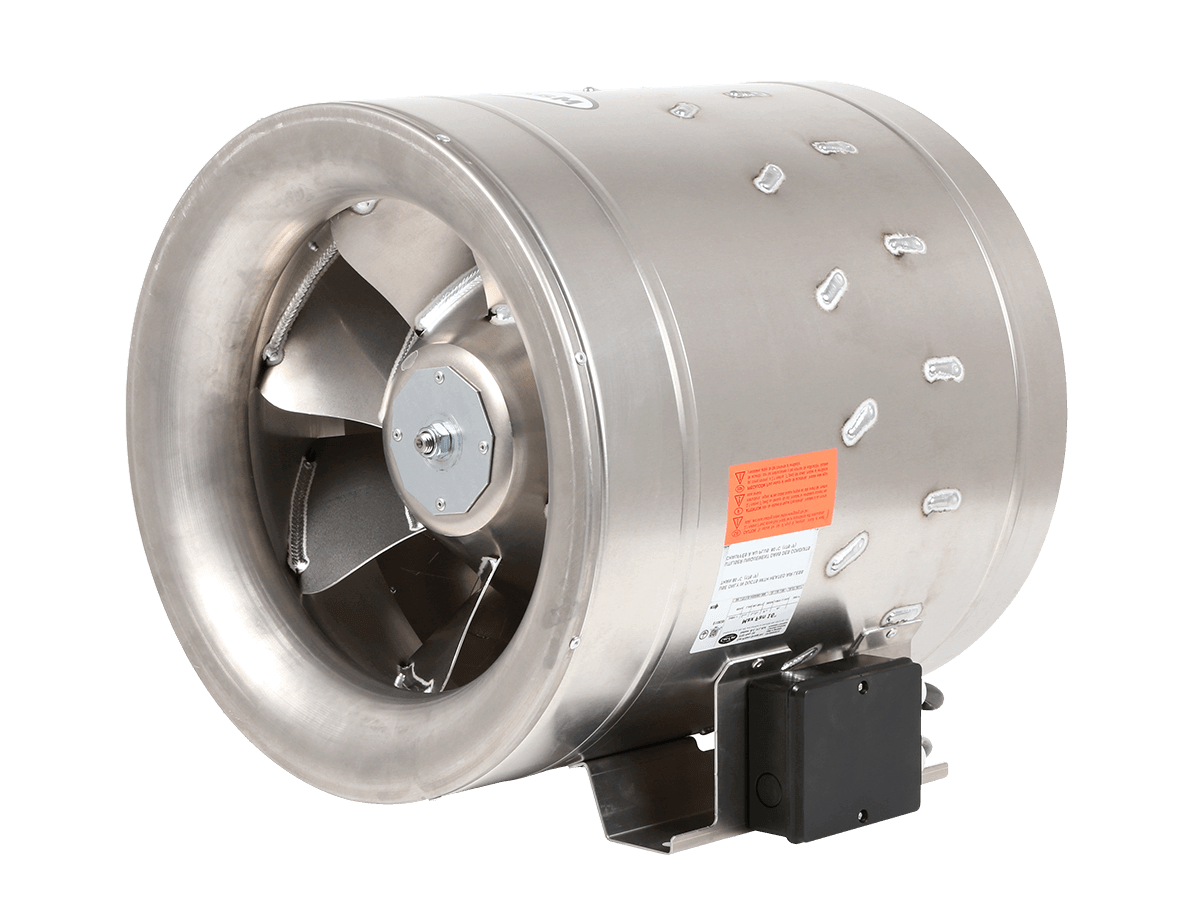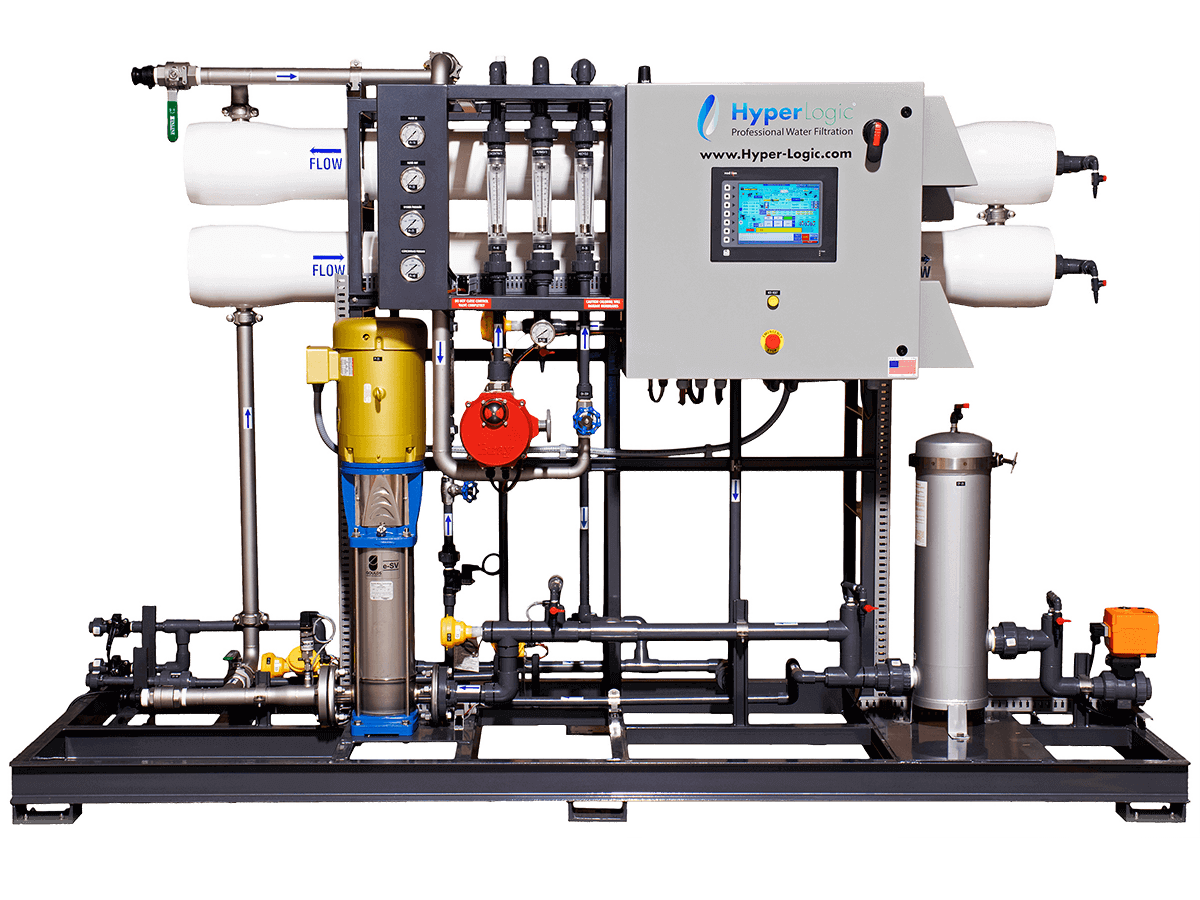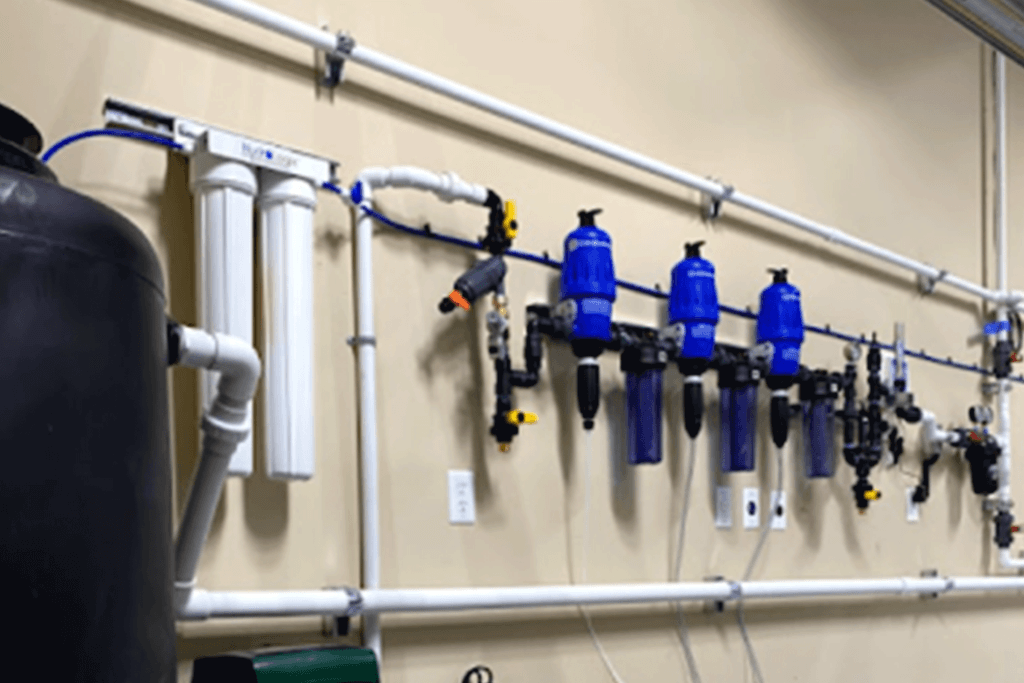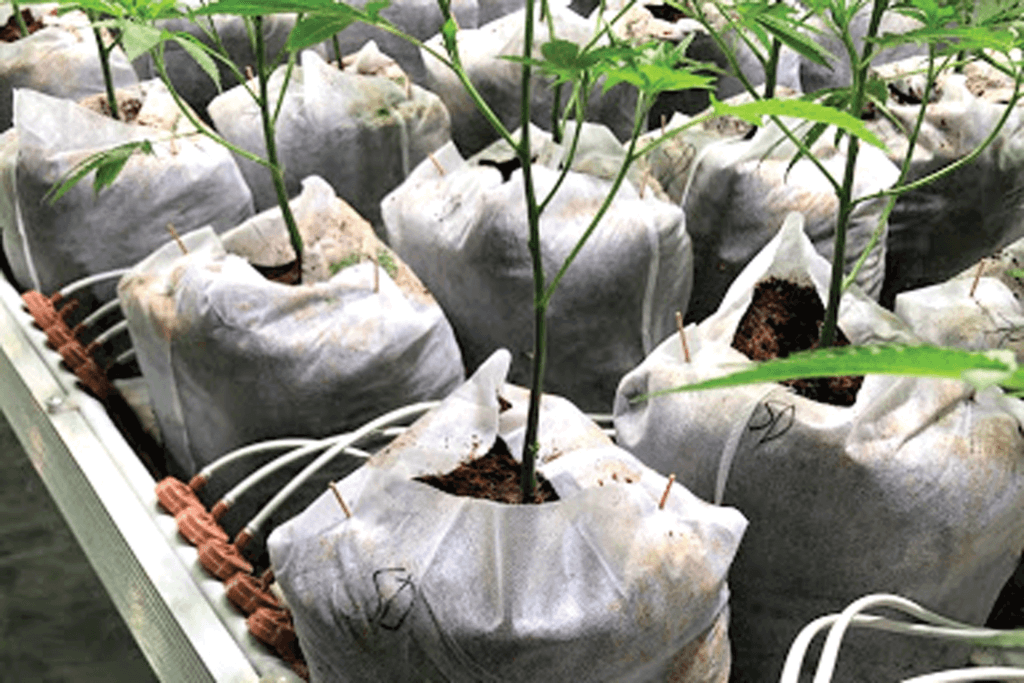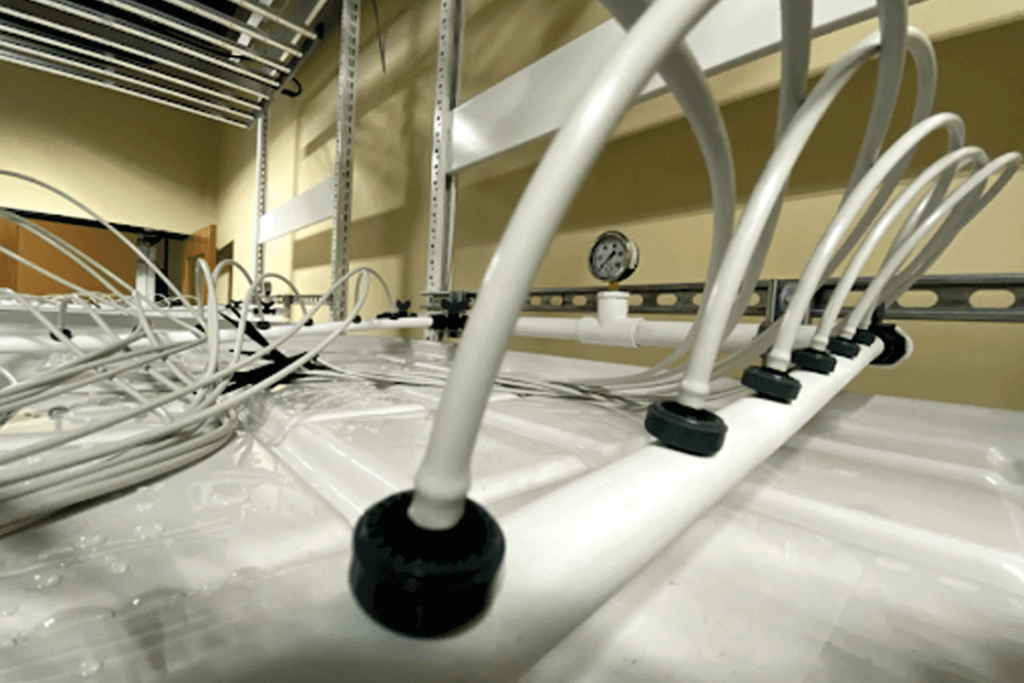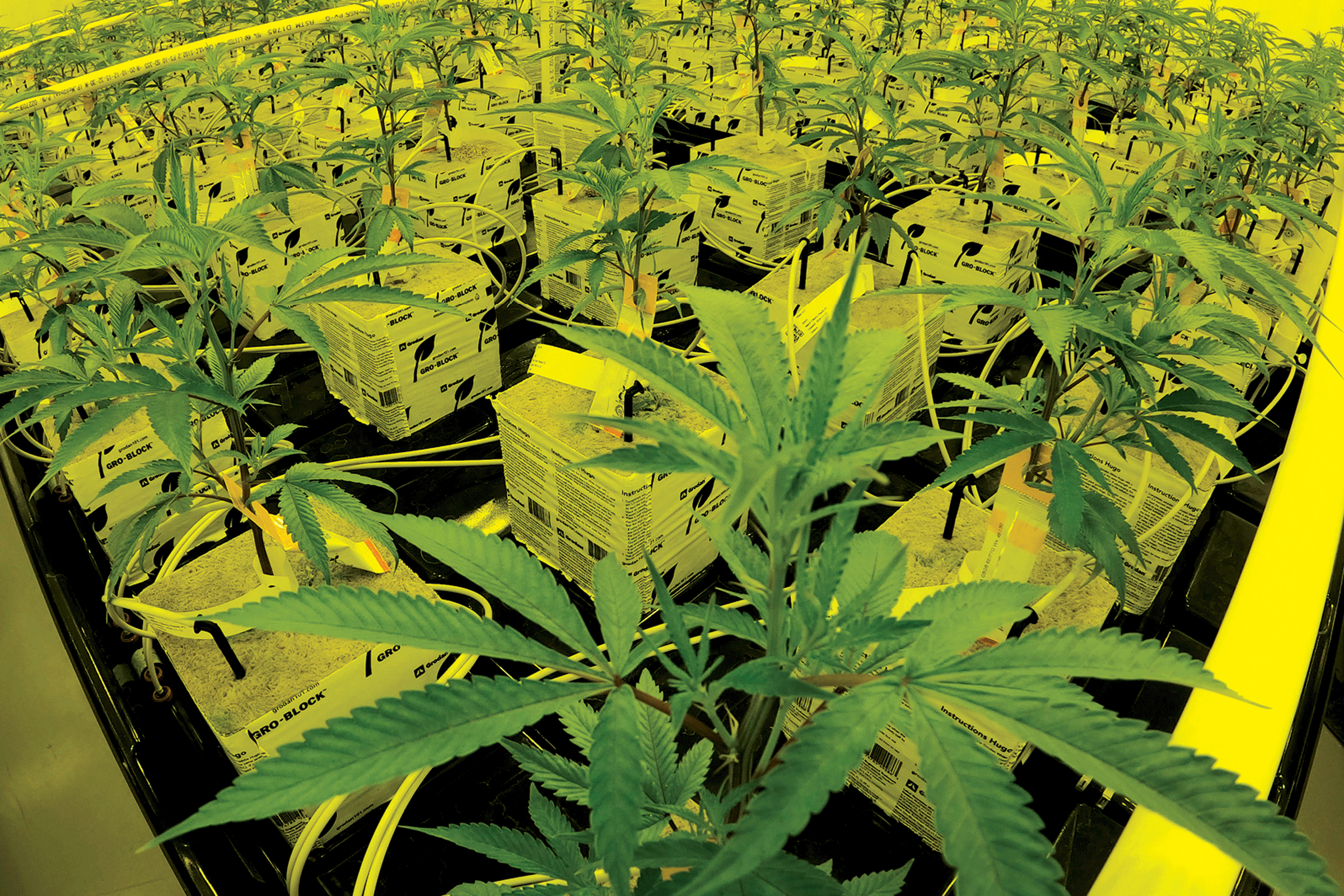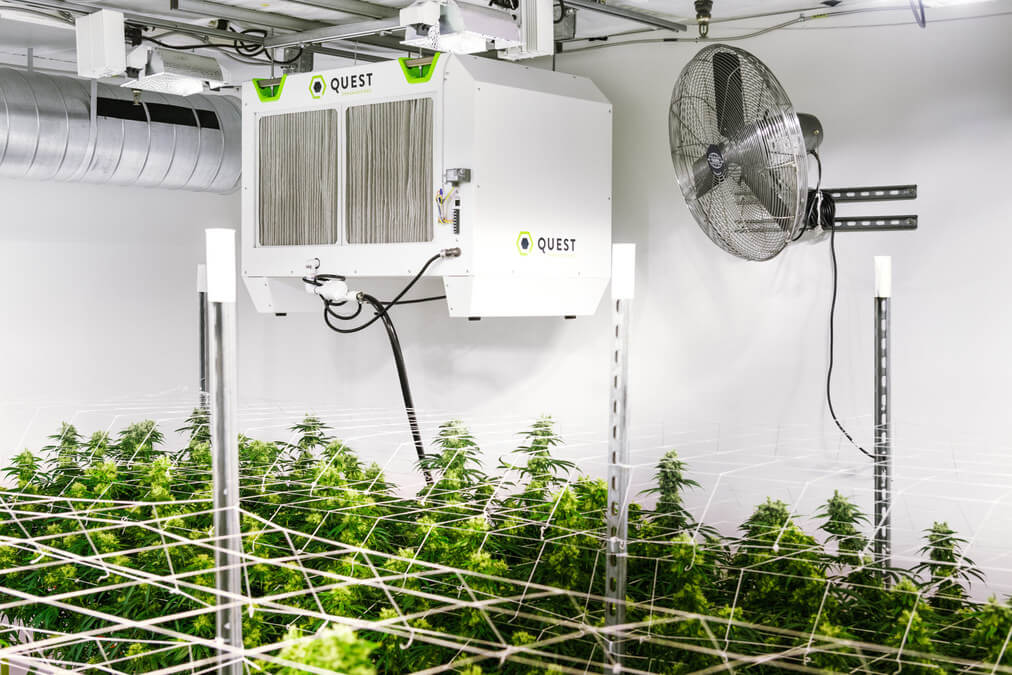Our Technical Services team’s irrigation experts dive into this oft-overlooked aspect of horticultural production.
Learn how to tell if plants are experiencing drought stress, variables to keep in mind when planning for irrigation, and best practices for keeping plants hydrated and growing to their full potential.
Webinar transcript
An edited version of this webinar’s full transcript has been provided below for your convenience.
Matthew J. Grassi — Hello everyone and welcome to today’s webinar, Irrigation Essentials Basics Biology and Best Practices. I am Matthew J. Grassi. I’m the new editor of Greenhouse Management Magazine. So glad you could take the time and join us today for this presentation. In this webinar, we will be having a conversation with Shaye Donald, a field technician for the Professional Technical Services Horticulture Department, as well as his teammate, Marisol Camacho, Irrigation Layout and Design Engineer, both of whom are with the Hawthorne Gardening Company. Just we’re going to learn a little bit more today about mastering proper irrigation in greenhouse facilities. Before we do get started, I have a few housekeeping notes to go over. Number one, this webinar is being recorded and it will be available in a few days on our website. Secondly, we will have a Q and A period.
We will have time for your questions at the end of this webinar, so please submit all of your questions at any time during the presentation, by using the Q and A function that’s at the bottom of the window there in your Zoom taskbar. One more quick housekeeping note. The views expressed during this webinar are those of the speaker, our speakers and not necessarily of Greenhouse Management Magazine or GIE Media. This webinar does not constitute an endorsement of the vendor or speakers views, products, services or advice. Now, I am pleased to introduce today’s speakers, Shaye Donald and Marisol Camacho. First about Shaye, Shaye is a field technician for the Professional Technical Services Horticulture Department at Hawthorne Gardening Company. Shaye has a background in greenhouse horticulture technology. He manages the design and construction of vegetable production facilities across British Columbia and he’s joining us today from Vancouver.
Marisol has been with HGC for about six months and previously had a year of experience in Kitchen Ventilation. She graduated from Oregon State University Cascades with a degree in energy systems engineering, which is the multi-disciplinary degree. It combines aspects of mechanical, electrical and industrial engineering courses, and then with a focus on energy and developing a systems approach to solving problems. Her role and background has allowed Marisol to sharpen this holistic mindset because while her focus is primarily on irrigation, she also does benching and lighting design for greenhouse facilities and really all indoor ag facilities as well.
Marisol recognizes the importance of understanding the impacts that changes no matter how big or small in your growing environment can have on your irrigation system and more importantly on your plants. So that’s just a little bit about our two panelists today that you’ll be hearing from. Now, we’re going to get into the meat and potatoes of the presentation. So I throw it over to Shaye and we’ll get started. Okay. So question number one, what is drought stress and how does it affect crop development?
Shaye Donald — Awesome. Thanks Matthew and thanks for the introduction. So I guess starting out, yeah, we want to talk about drought stress and what that means to growers big and small. So drought stress is a general term that can mean quite a few things, but overall it’s just when a plant doesn’t have enough water to maintain its physiological processes and so it might start shutting things down in order to prevent an excess loss of moisture. So kind of the symptoms that you might see in a plant or in a crop are fairly familiar to even non-growers, because as a plant has water loss that’s excessive, as that’s occurring, it’s losing water in its vacuoles, within its cells. And that starts to drop what’s called the turgor pressure that keeps plants upright. So it’s a fairly familiar thing to see is a plant that’s drooping, its leaves are facing downwards as it loses that force that’s keeping the leaves upright.
There’s a number of things that are happening on the cell level as this is going on. On plants leaves, they have stomatal openings that open and close to allow water vapor to escape as well as oxygen, but it also brings carbon dioxide into the leaf, which is essential for photosynthesis. As the plant realizes, “Oh, I don’t have enough water to keep things going.” It shuts down those stomatal openings. It shuts them to try and prevent that water loss. It can’t completely prevent it, but it will slow it down which also puts a stop on photosynthesis. Bringing this back around to growers, we obviously want to keep the plants photosynthesizing as much as possible. For growers professional and amateur alike, you don’t want your plants to experience this drought stress because that’s going to reduce the photosynthesis, which is going to reduce your yield potential.
Hawthorne has the products and advice to keep you in the game
Hawthorne Gardening Company, in partnership with some of the largest irrigation equipment manufacturers in the world, is here to help you maximize your crop’s potential with the best irrigation management strategies and information available today.
Our dedicated team can assist you in every step of the way to ensure that your system will work exactly how it is supposed to from day one.
For more information, call Hawthorne at 888-808-4826 or fill out the form below.
SD — For greenhouse growers that’s means lost dollars. You don’t want to be keeping your lights and fans and everything running while your plants are just sitting there trying desperately not to lose water. That’s kind of an acute drought stress situation. That’s where the plant hasn’t adapted to what’s going on in the root zone. It’s just been exposed to extremely dry conditions and it’s trying really hard not to die basically. But over time because plants are smart, they are able to adapt to their conditions because they don’t have the luxury of picking up their roots and moving 20 feet closer to a stream. In a natural environment, they have to change the way that they use water in order to adapt to those dryer conditions.
This is something that is a bit more nefarious and something that we really want to push and talk about today is, just because your crop looks okay and it looks like everything’s growing well, that your plants could still be experiencing drought stress. It’s just that they have adapted to it now and they do things like they reduce the number of stomatal openings on their leaves. They produce smaller leaves and ultimately it again reduces your yield potential and it reduces the amount of photosynthesis that’s going on day-to-day. If you have a crop that is consistently exposed to just minor drought stress conditions, you end up with a crop that might look subjectively fine but it’s actually growing smaller and producing less yield overall.
And that’s kind of what we’re all about and what we’re all about preventing, is we want our plants just drinking like crazy and therefore growing like crazy. That’s ideal.

MJG — Interesting, Shaye, as you noted, we want to avoid this end of the year yield hit. So yeah, limiting drought stress is super important. So guys what factors into irrigation system planning? I feel like this question will be a perfect fit for Marisol in her systems approach and kind of having an all encompassing approach to a project.
Marisol Camacho — This question really, it touches on a lot of different things. Whether you’re greenhouse or you’re completely indoors, hydroponic growing really does require a holistic approach. The various inputs in the growing environment will have an impact on the irrigation system and its needs, but ultimately everything is intertwined, so they’re all going to affect each other in different ways. One of the biggest things is going to be lights in your growing environment. Switching the type of light or switching the type of photo period of light or the length of photo period of light in a greenhouse or indoor facility will ultimately impact the environment.
For example, a big thing is switching from a high pressure sodium lights to LEDs. So switching to LED lights actually reduces the amount of radiant heat available to the plant and it will ultimately infect evapotranspiration rates. Another thing that can infect your plant is the amount of plant biomass or the pruning techniques used across different high value crops, vegetables, hemp, et cetera. This decreases the thermal mass that’s ultimately available and will impact the air flow that’s moving through both the beneath the canopy and above, is also decreasing the surface area available for transpiration as I mentioned that before. And also different types of plants, they’re all going to have different ideal irrigation parameters.
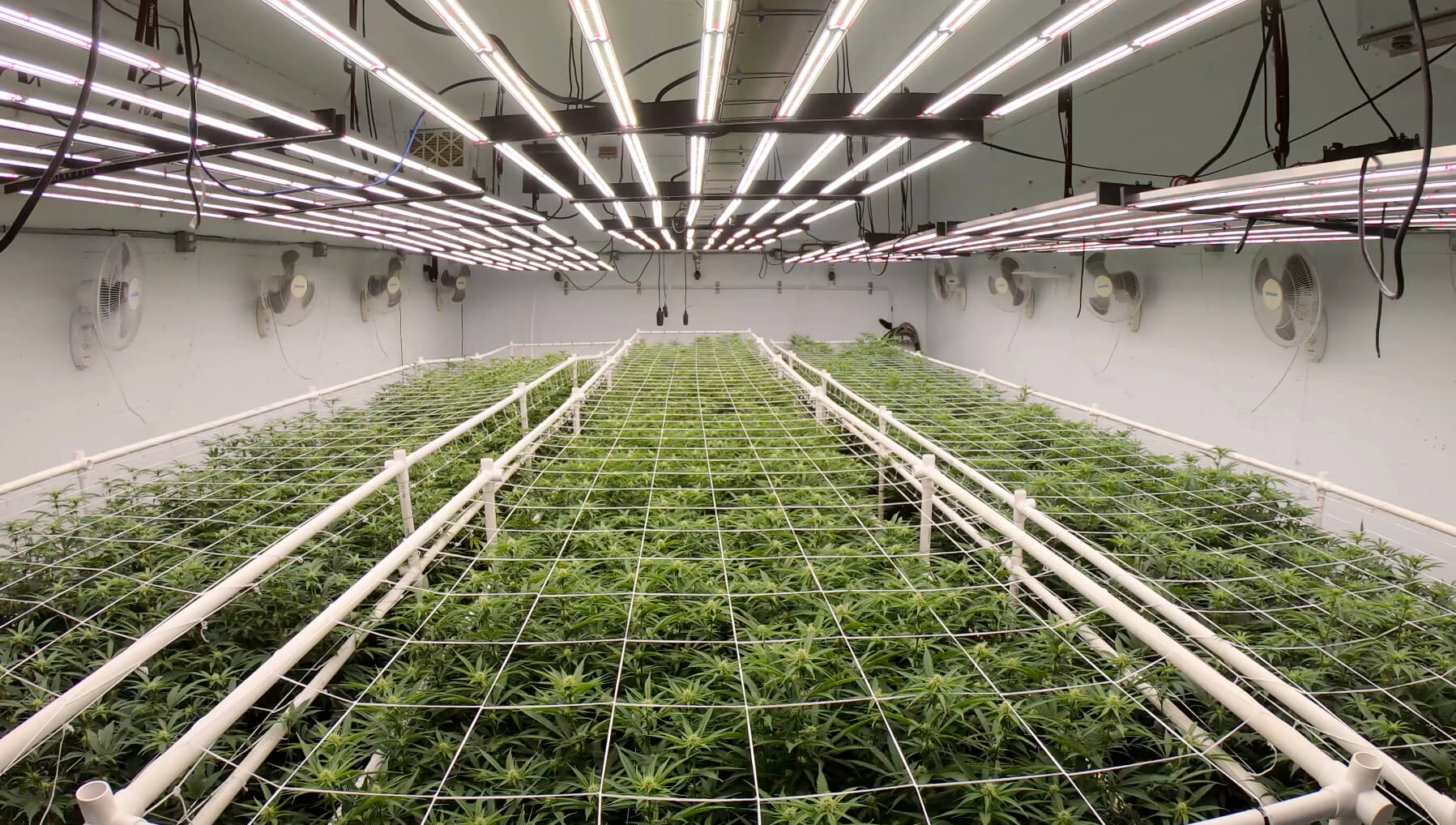
MC — You’re going to need to adjust depending on the type of crop that you’re growing, but ultimately the type of species you are as well. This is a big part of I think hydroponic growing is that we don’t know everything about different types of plants and how they truly behave and what are the different buttons that can kind of push them into the next stage of growth. Another big thing is going to be the impact on your heating and cooling. When you are irrigating and you are doing small and frequent irrigation events, you’re going to put a lot less stress on your HVAC equipment versus if you’re doing very infrequent, larger volume irrigation events. So instead of putting a bunch of water into the room at one time, you’re putting a little bit incrementally over time and putting less stress on your system.
Another huge part as we can all imagine is what’s going on at the plant. There’s the media type that you decide to pick and then also the pot size. As we’ve seen in hydroponic growing, three of the most popular growing medias are going to be coco coir, rockwool and peat. So these all have different benefits, but they also all require different irrigation strategies and that’s important to consider. You shouldn’t be watering six inch rockwool cubes the same as five gallons of coco coir. So a really important part of it and I’m going to hit a little bit on kind of the benefits of each of these growing medias, and then also there’s irrigation strategies you could use. First we have coco coir, as many people know it holds moisture really well, it allows for a lot of oxygenation and it’s really easy to use.
It’s very user-friendly and if it’s properly treated prior to use within the manufacturing process, it’s going to be great for your plants. It retains water for a long period of time and can handle fewer irrigation events and it can handle potentially [inaudible word due to connection lag] irrigation event or any mistakes that a new grower may make. This also has the second most aeration available to the plant next to rockwool. Going into rockwool, as mentioned it has the most aeration available and also it does require a high level of skill to efficiently irrigate. And that’s where people can kind of get messed up using rockwool, especially if they’re new to growing on a larger scale. Lastly, it’s also not the most sustainable growing media, so that’s a kind of potential downside of choosing rockwool.
…it might work today, but as soon as you change a factor or change something in your growing style down the road, then you’re going to have problems. So just trying to account for that on the front end, and also understand that growers do like to change these things and kind of play around with stuff is what we try to incorporate into any of our recommendations or any of our work.
MC — Then we have peat last. Peat is very, very easy to use. As we’ve seen it’s available in a lot of consumer grade soils that are out there. However, with all the positives it does have, it is a little bit more application specific. It can not be as well suited for higher intensity crops because of the potential for over-saturation of water. And then lastly, we have pot size. Bigger pots are going to require less frequent irrigation events, but it is going to be harder to control the moisture content available, and also there is potential for a greater margin of error in terms of, if you water a little bit too much it’s probably going to be okay. Versus if you have a smaller pot, over-watering can have a much more severe impact on plant health throughout the growth cycle.
Small pots obviously yield themselves really well to the strategy of pulse irrigation and it’s really easy to maintain moisture and aeration in the root zone when you’re putting in a lot of smaller irrigation events. As a team at Hawthorne, we always strive to design our systems with consideration to all these factors and to allow for flexibility within your system. We want to make sure that if you decide to expand by adding a couple more plants to each of your rooms, we’re going to be able to handle that. That’s a really important part of planning your irrigation system. We’ll get a little bit more into this as we get further into the webinar.
It’s also important to introduce automation and monitoring into your system. This can help you keep track and have real-time data showing that you are delivering the proper amount of water and types of nutrients to your plants.
MJG — Great stuff there, Marisol. You kind of touched on it a little bit there at the end, but are there some preventative measures that growers and their teams should be keeping in mind during the design process when they’re designing the irrigation system that they want to use in the greenhouse, to account for potential changes down the road, such as maybe going from HPS to LED, or maybe adding some additional acreage that you hadn’t planned on originally but you want to scale up and expand? Any high level thoughts there that you guys can share with us?
MC — I guess there’s a wealth of problems, unfortunately, that you could have in a growing facility. I’ll just touch on some of the most common ones that we see. One of the first things is the, improperly sized equipment or placed equipment and within that also designing for redundancy. If you have a pump for each different room for say in some indoor facility, you’ll be able to accommodate any potential addition of more plants versus if you have only two pumps handling like six rooms, as many pumps or as many pieces of equipment… I’m actually gonna pause there, sorry that didn’t flow very well. Another potential issue of poorly designed irrigation systems is going to be improperly sized or placed equipment, whether that be pumps, pipes, filters, or valves, and it’s also going to be a designing for redundancy.
15:00
There are a lot of common issues that can potentially show up in a drip irrigation system, many of them can be due to improperly sized or placed equipment such as pumps, pipes, filters, and valves. We could also see signs in terms of fungus gnats or different types of pests that are present because of an excess amount of water. We could also see unwanted plant stress and stress plants are more susceptible to pests and they’re more susceptible to just all the environmental factors as they become more stressed out. Specifically, some of the things that we definitely do as designers is we always aim to design redundant systems.
MC — So we want to make sure that we have enough pumps to cover any potential expand… or we have large enough pumps that can cover any potential addition of plants and any increases in flow rates. It’s also important to introduce automation and monitoring into your system. This can help you keep track and have real-time data showing that you are delivering the proper amount of water and types of nutrients to your plants. I’m going to leave this open for Shaye to add some quick tidbits too.
SD — Some preventative items that Marisol touched on; We tend to want to allow growers the flexibility to, if they want to change their planting density down the road, or modify their irrigation scheduling or strategies that they have the control aspect and the ability to do so. Like Marisol mentioned, we would try and include some kind of baked in wiggle room so to speak in the design, whether it’s slightly oversizing pipes, I think is fairly common so that they can handle a higher flow rate down the road, or having a larger pump or something that has a variable frequency drive that allows it to maintain the pressure that’s needed, because one of the biggest issues that we see are commonly improperly sized items like that.
What happens is it might work today, but as soon as you change a factor or change something in your growing style down the road, then you’re going to have problems. Trying to account for that on the front end, and also understand that growers do like to change these things and kind of play around with stuff is what we try to incorporate into any of our recommendations or any of our work.
It’s important to understand what types of minerals and things are in your water so that you can properly clean it before it goes to your plants.
MC — Another big thing is getting a grasp of the facility as well, understanding where the water is actually coming into your building and making sure that when you’re sizing those pumps, that you’re accounting for any potential pressure loss over those lengths. And there’s a lot of different things.
SD — Just adding to that too, just how much water do they have access to. We’ve had situations where people have to drill extra wells for example, or go to the city and get an increase, which is probably fairly common among some of the viewers today.
MC — Water quality is another part as well. Especially as people are growing in different parts of the country, it’s important to understand what types of minerals and things are in your water so that you can properly clean it before it goes to your plants.
MJG — It sounds like there’s a lot of variables, there are a lot of moving parts where it behooves you as a grower to have a team of experts kind of on your side, helping you through this process and making sure you’re planning for what you need down the road. We’ve touched on a few different production systems, a few different growing styles. For greenhouse growing specifically, how is irrigation different when you’re deploying it within a greenhouse versus another type of indoor facility? And what are some of the common issues or problems that you see typically in a greenhouse operation that’s adding irrigation in?
…you want to be able to give your crop the least amount of water possible while still maintaining that yield that’s desired.
SD — Greenhouse is pretty interesting because, you know I had someone tell me that greenhouse growing is kind of like regular agriculture but for control freaks. I think that’s kind of true because you take all these things that in an agricultural setting, you have no control over, your soil type to some degree, the temperature, the humidity, the wind. Those are all things you have to contend with, whereas in a greenhouse or an indoor setting, which takes it kind of to the next extreme, you get to control all those items to some degree. When you have to deal with irrigation in a greenhouse setting, it’s going to be different than in a field, as well as indoor. Compared to in a field, your crops have essentially an unlimited amount of room for their roots to grow into.
You can get away with not irrigating for sometimes multiple days and the crops are going to do just fine. In fact, a lot of what irrigation management is in a field versus in a greenhouse or indoor is just accounting for what you get from the rain, your soil type, the environmental conditions and things like that and there’s a lot more buffer there and a lot more room for you to take time and make those decisions. In a greenhouse setting when you’re growing in soilless media especially. Now, you don’t have the luxury of that time and what you need to do with this reduced root ball with this lower amount of volume for the roots to grow into, you need to increase the frequency of your irrigation significantly. Now, in a greenhouse compared to an indoor setting, indoor setting it’s kind of, you have great big HVAC systems and the goal is to keep your environment thing on exactly the same throughout the entire day.
SD — That kind of makes things a bit easier because now you can say, I want to irrigate every 30 minutes and give it 200 mils and just do that all day, starting two hours after your lights turned on, for example. In a greenhouse, there’s going to be some compounding factors such as light levels and the humidity and temperature, which you have some control over, but it’s not going to be that perfect, perfect control that you see in an idealized indoor setting. What a lot of modern controllers do, environmental controllers for greenhouse is they kind of factor a lot of those things in automatically. Obviously the grower still has to make a lot of decisions on the front end about what those parameters are going to be. But a lot of it is just through these very complex systems that exist, that assist growers with making those decisions.
I think one of the most recent additions to this is kind of the… there’s been a lot of sensing soil, moisture sentencing technology that’s kind of taking off in soilless media these days, which is very exciting because now that’s the most direct way to tell how much water is my plant getting is, well, how much water is there. You can indirectly monitor it by looking at things like I was saying, light, humidity, et cetera, but this allows you to really get the plant-eye view, so to speak.
MC — Just to add to that really quickly, doing your irrigation scheduling using sensors, the sensor-based set point irrigation really has the potential to reduce your water volume significantly in your operation. And despite also the low cost of water, there are a lot of potential economic benefits that may result from this in terms of reduced labor, fertilizer requirements, and then disease control.
MJG — Interesting guys, it sounds like using some of these advanced high-tech EC and soil moisture sensors is something more advanced greenhouse growers are doing today. Are there any other advanced irrigation techniques that you’re seeing from a lot of greenhouse operations that are working well?
A well-designed drip irrigation system reduces waste and dehumidification while maximizing water distribution efficiency
SD — Yeah, absolutely. It’s very interesting because I think a lot of the studies going on nowadays, it’s really, you want to be able to give your crop the least amount of water possible while still maintaining that yield that’s desired. Sustainability is going to be the number one issue moving forward for a lot of folks and I think water use is going to be front of mind for that as well. So actually utilizing drought stress itself is something that is also already being done in a lot of vegetable crops for example, crop steering, if anyone is familiar with like tomato, cucumber, pepper production that sort of growing, you’ve got an indeterminate plant that wants to both be producing vegetative leaves as well as productive, generative fruits.
So how do growers tell the plant, “Hey, you should be producing more leaves or more fruits.” One of the largest tools or most immediate tools that growers have in their belt is through irrigation scheduling. And so this is called crop steering. I’m not sure if I mentioned it before, and what you can do is essentially by delaying your irrigation a little bit in the morning, adjusting a few key environmental factors. You can sort of signal the plant that it might be receiving less water moving forward. And so it kind of activate some of those processes we were talking about earlier, but without really reducing the photosynthetic ability of the plant, that’s the ideal. By running things dryer, so to speak, you signal to the plant to produce more fruit. Whereas if you have more of a well saturated consistently moist media, then the plant kind of thinks, “Hey, I can relax a bit and start producing more leaves.”
Whether it’s a greenhouse indoor or outdoor application, we’re here to assist growers to get the maximum yield and the best possible crop that they can.
SD — That’s one of the key tools, but there are I think going to be many more moving forward, and this application I believe will extend to other crops. There are a lot of studies that have been done on crops that produce essential oils and especially terpene type volatile chemicals that humans might find desirable because we can extract that and it smells nice. Now there’s a lot of crops out there, even medicinal ones that that is beneficial and there’ve been that show that if you kind of drought stress the plants towards the end of their production cycle, that they might produce more of these chemicals. Sometimes they can be protective chemicals. A lot of the reason that they’re even being produced might not entirely be known yet, but again, I think that focusing on irrigation as a tool is extremely exciting. It’s something I’m quite passionate about.
MJG — Excellent. Marisol, anything to add to that or anything you wanted to say there?
MC — Well, all great points that Shaye brought up and also as somebody with background in energy and sustainability, I really look forward to seeing the different advances and research that’ll continue going into understanding how irrigation can really affect plant physiology and plant outputs.
…even if we don’t have a solution for everything, we’re here to make sure that it will integrate with anything else you choose and that everything will work in unison.
MJG — Excellent. Guys we’re coming up to the end of this presentation. I feel like this has been a great use of everyone’s time, talking about something that maybe not as much emphasis is put on as light selection or genetic selection, or some of these things growers are very focused on when they’re planting a crop, but just as important obviously. Putting a bow on this whole presentation, how can you avoid drought stress in the greenhouse?
SD — Avoiding drought stress in the greenhouse, it’s starts from the pre-planning, it starts from when you’re getting ready to construct your building. And what you have to do at that point is you got to choose the right partners because you want someone that’s not only going to understand irrigation and drought stress, but you want a partner who can kind of give you the whole holistic picture, connect the dots, connect things to your growing media, your growing style, your crop, et cetera, et cetera, et cetera. Ideally someone who is going to be there when they hand you keys and this is selfishly the plug for Hawthorne, because that’s exactly what we do. We have a team that myself and Matthew and Marisol are a part of, that’s made up of horticulturists, mechanical engineers, lighting and electrical engineers, as well as design and technical support that really brings all those dots together. Whether it’s a greenhouse indoor or outdoor application, we’re here to assist growers to get the maximum yield and the best possible crop that they can.
MC — Really well sums it up Shaye. And I would just like to add to that is that throughout the whole design process and project process, we’re here before and we’re here after. And even if we don’t have a solution for everything, we’re here to make sure that it will integrate with anything else you choose and that everything will work in unison.
Learn more about Irrigation Esseentials here ⟶
